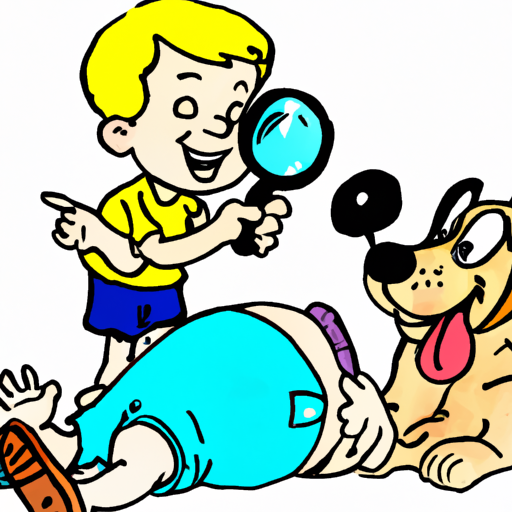Unravelling the Mystery of Your Pet’s Anatomy
You’ve probably spent countless hours cuddling, playing, and even grooming your beloved canine companion. You know every spot that gets their tail wagging, every ticklish area, and maybe every small scar from a past adventure. But, have you ever wondered, “where is a dog’s belly button?”
It’s a question that stumps many dog owners. After all, unlike in humans, a dog’s belly button isn’t exactly a prominent feature. But, rest assured, just like other mammals, dogs do have belly buttons. Let’s delve into the fascinating world of canine anatomy to uncover this hidden gem.
The Tale of the Invisible Belly Button
Why is it so hard to find a dog’s belly button? The answer lies in the way canine umbilical cords heal and evolve.
- At birth: Just like humans, dogs are connected to their mothers in the womb via an umbilical cord. This cord provides nourishment and oxygen to the growing puppy.
- After birth: Once the puppy is born, the umbilical cord is severed. The remaining stub on the puppy’s belly dries out, shrinks, and ultimately falls off.
- As they grow: The spot where the umbilical cord was attached heals completely, leaving behind a very subtle scar which is the belly button.
This scar is often hidden in the fur and doesn’t resemble the “innie” or “outie” that we’re familiar with in humans.
Locating the Canine Belly Button
Your dog’s belly button is typically located on their belly, closer to the end of their ribcage than to their rear. It appears as a small, thin, whitish scar and can sometimes be slightly raised or have a bit of a swirl to it.
Here’s a little guide to help you locate it:
- Start at the base of your dog’s ribcage.
- Slowly move your hand down, towards their tail.
- Feel for a slight irregularity in the skin texture.
Remember, every dog is unique, so the exact location and appearance can vary.
The Belly Button and Your Dog’s Health
While the canine belly button is a harmless remnant of their time in the womb, there are rare instances where it can become a concern.
Sometimes, a dog may have an umbilical hernia, where part of their intestines pushes through the abdominal wall near the belly button. This usually manifests as a soft swelling or bulge near their belly button.
| Signs of Umbilical Hernia | What to Do |
|---|---|
| Soft swelling or bulge near the belly button. | Consult your vet immediately. |
| Your dog seems to be in pain. | Do not try to push the bulge back in. |
| Loss of appetite or lethargy. | This might need surgical intervention. |
However, in most cases, these hernias are harmless and may even resolve on their own.
Frequently Asked Questions
1. Do all dogs have belly buttons?
Yes, all dogs, just like other mammals, have belly buttons. However, a dog’s belly button is a small scar and not a noticeable feature like in humans.
2. Can I touch my dog’s belly button?
Absolutely! It’s not sensitive or harmful to your dog. However, always make sure your touch is gentle and respectful to your pet’s comfort.
3. What should I do if I suspect my dog has an umbilical hernia?
If you notice a bulge or swelling near your dog’s belly button, or if your dog appears to be in discomfort, consult your vet immediately.
As a loving caregiver, understanding your dog’s anatomy can deepen your bond, making you more attuned to their health and well-being. So, now that you know where to look, you might discover a new ticklish spot to make your furry friend’s tail wag even faster!



